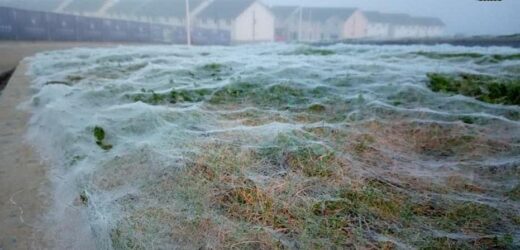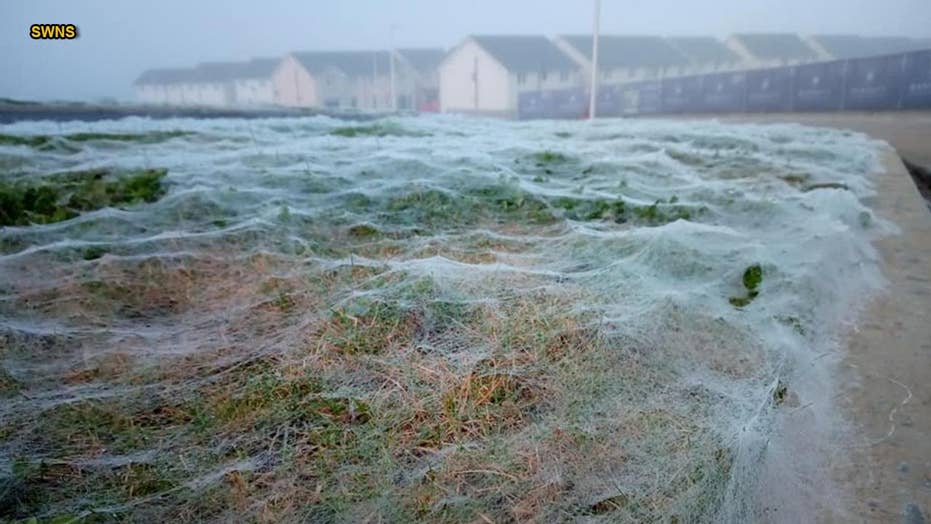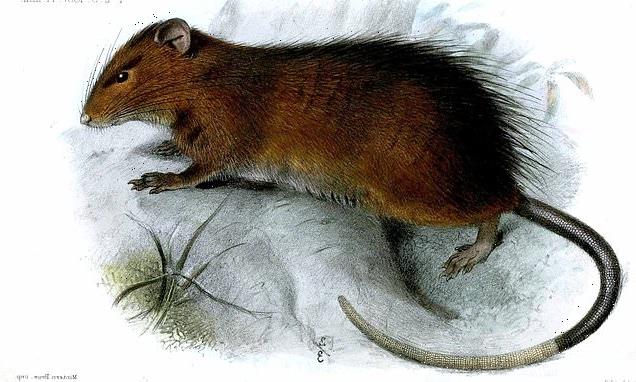AMAZING PICS: Giant spiderweb confused for frost blankets road
Eerie photos taken in Scotland show a huge road verge blanketed by a giant silky spiderweb, which the man who took the photos originally mistook for frost. According to Leo Anderson who spotted the web, it stretched across ‘hundreds of yards.’ According to conservationists, the web may have been created by money spiders, a part of the family Linyphiidae, ‘the largest family of spiders in the UK.’
Scientists say that the Joro spider is spreading across the southeastern U.S. and could move into much of the East Coast.
The newly invasive spider from East Asia is yellow, blue-black and red, and its thick golden web was spotted on power lines, porches and vegetable patches across Georgia and South Carolina in 2021.
It remains unclear how and when the first Joro spider arrived in the U.S., but a researcher identified one in Georgia in 2014.
The University of Georgia (UGA) says the arachnids first arrived stateside around 2013.
In the February study from university entomologists published in the journal Physiological Entomology, they found the Joro – also known as Trichonephila clavate – appears better suited to colder temperatures than a related species: the golden silk spider.
The Joro spider has spread across Georgia
(iStock)
It has about double the metabolism, a 77% higher heart rate and can survive a brief freeze that kills off its relatives, according to researchers.
“Results show the Joro spider has a shorter season than its cousin, indicating it can complete its lifecycle within a narrow period of suitable weather. It has an inherently higher metabolism (twice as high), and has a 77% higher heart rate when exposed to low temperature. Finally, Joro spiders survive better (74% compared to 50%) in a brief freeze,” the authors wrote. “These findings suggest the Joro spider can exist in a colder climatic region than the southeastern USA, which can be useful information for management or planning purposes.”
They also noted that Joros are found in much of Japan, which has a similar climate to the U.S.
“Just by looking at that, it looks like the Joros could probably survive throughout most of the Eastern Seaboard here, which is pretty sobering,” study co-author Andy Davis said in a statement.
Davis said people should try to learn to live with the orb weavers. Their impact on native species and the environment is also unclear – though some researchers believe they are benign.
According to UGA, they may even serve as an additional food source for native predators like birds.
While Joros can use their silks to carry them across the wind to new locations, humans have also carried them and likely will on cars or in luggage.
“There’s really no reason to go around actively squishing them,” co-author Benjamin Frick said. “Humans are at the root of their invasion. Don’t blame the Joro spider.”
The Associated Press contributed to this report.
Source: Read Full Article




